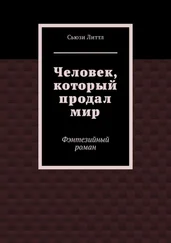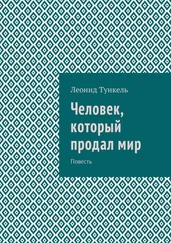For full details see Sumption, Albigensian Crusade.
Abulafia, Frederick II pp. 346–347.
Christiansen, Northern Crusades pp. 126–130; Fonnesberg-Schmidt, Popes and the Baltic Crusades.
Richard Spence, 'Gregory IX and the Attempted Expeditions to the Latin Empire of Constantinople: The Crusade for the Union of the Latin and Greek Churches,' Journal of Medieval History 5 (1979) pp. 163–176; Christiansen, Northern Crusades pp. 133–134.
Monumenta Germaniae Historica, Scriptores 10 p. 59; 17 p. 294; Peter Jackson, 'The Crusade against the Mongols, 1241,' Journal of Ecclesiastical History 42. (1991) pp. 1–18.
Jackson, Mongols and the West p. 67.
Theiner, Vetera Monumenta I pp. 184–185; Gockenjan & Sweeney, Mongolensturm p. 169; Jackson, Mongols and the West p. 66.
For biographies of Frederick see Abulafia, Frederick II; Kantorowicz, Frederick the Second; Wolf, Stupor Mundi; Sturner, Friedrich II.
Maalouf, Crusades through Arab Eyes p. 230.
Aubrey de Trois-Fontaines, Chronica in Monumenta Germaniae Historica, Scriptores 23 p. 943.
Detwiler, Germany p. 43.
Bezzola, Mongolen in abendlandischer Sicht p. 76.
Bjorn K. U. Weiler, Henry III pp. 86–94.
Monumenta Germaniae Historica, Scriptores 1 pp. 765, 796, 821–823, 826; 2 pp. 2, 102, 105.
Matthew Paris, Chronica Majora iv pp. 115–118; Gockenjan & Sweeney, Mongolensturm p. 253.
В данном случае автор использует имя Qadan . Кадан — младший сын Угэдэя. Второй сын Угэдэя по старшинству — Годан (Кодан, Кутан, Кудэн, у автора ранее — Коден). Старший сын — Гуюк. — Прим. пер .
Nothing is more controversial than the issue of numbers during the Mongol invasion of Europe. Modern historians seem to compensate for the medieval chroniclers' habit of multiplying numbers tenfold by a compensating 'downsizing'. The truth is probably somewhere between the two extremes, but at the lower end. Estimates for the Mongol army in Poland range from the absurdly high 100,000 (far greater than the entire army in Russia and Eastern Europe) to an absurdly low 8,000 operating in Poland. Some Polish historians, doubtless wishing to minimise a national humiliation, have only 2,000 (!) Poles at the battle of Liegnitz. Others have the timbers at Liegnitz approximately equal at 8,000 each. The most likely figure is somewhere around 20,000 (or slightly fewer) Mongols and 25,000 (or slightly fewer) Poles; see Eric Hildinger, 'The Battle of Liegnitz,' Military History, June 1997. For a convincing argument on Mongol numbers (and the 20,000 mark at Liegnitz) see John Masson Smith, 'Mongol Manpower and the Persian Population,' Journal of the Economic and Social History of the Orient 18 (1975) pp. 271–299 (at p. 272). Denis Sinor, 'The Mongols in the West,' loc. cit. accepts even higher numbers. The 'downsizers' are best represented by David Morgan (Mongols p. 88) and Carl Sverdrup, 'Numbers in Mongol Warfare', Journal of Medieval Military History 8 (2010) pp. 109–117.
Lerski, Historical Dictionary of Poland pp. 309–310.
Iwamura Shinobu, 'Mongol Invasion of Poland in the Thirteenth Century,' Memoirs of the Research Department of the Toyo Bunko 10 (1938) pp. 103–157.
Schmilewski, Wahlstatt 1241 35–75.
C. W Connell, 'Western views of the origin of the "Tartars",' loc. cit. pp. 115–137 (esp. pp. 117–118); Matthew Paris, Chronica Majora iv pp. 111–112, 118; J. J. Saunders, 'Matthew Paris and the Mongols,' in Sandquist & Powicke, Essays pp. 116–132; Anna Rutkowska-Plachcinska, 'L'image du danger tatar dans les sources polonaises des XHIe-XIVe siecles,' in Universite de Provence, Histoire et societe pp. 14–32.
Strakosch-Grassman, Mongolen in Mitteleuropa p. 42; Spuler, Goldene Horde p. 22. Some sources insist on one, despite much better evidence to the contrary. See Skelton, Marston & Painter, Vinland Map p. 80; Maron, Legnica 1241 pp. 123–131.
RT II p. 411.
Davies, God's Playground I p. 71.
Strakosch-Grassmann, Mongolen in Mitteleuropa p. 39.
Denis Sinor, 'On Mongol Strategy,' Proceedings of the Fourth East Asian Affairs Conference (1971) pp. 238–249 (at p. 245).
Strakosch-Grassmann, Mongolen in Mitteleuropa p. 43.
This story and many others, which belong more to the realm of the historical novel than sober history, is recounted by the fifteenth-century Polish monk Jan Diugosz. Michael, Jan Dlugosz.
JB I pp. 225–226; RT II pp. 325–326; Boyle, Successors pp. 56–57.
Hildinger, 'The Battle of Liegnitz,' loc. cit.; Michael, Jan Dlugosz.
Strakosch-Grassmann, Mongolen in Mitteleuropa pp. 37–52; Oman, Art of War pp. 328–330.
Спасайся, кто может ( фр .).
d'Ohsson, Histoire II pp. 124–126.
Skelton, Marston & Painter, Vinland Map pp. 80–81; Wolff, Geschichte p. 189.
Schmilewski, Wahlstatt 1241 pp. 87–108.
Arnold, Hochmeister p. 27; Jurgen Sarnowsky, 'The Teutonic Order Confronts Mongols and Turks,' in Barber, Military Orders pp. 253–262; Urban, Teutonic Knights.
Sophia Menache, 'Tartars, Jews, Saracens and the Jewish-Mongol "plot" of 1241,' History 81 (1996) pp. 319–342; Israeljacob Yuval, 'Jewish Messianic Expectations towards 1240 and Christian Reactions,' in Shafer & Cohen, Toward the Millennium pp. 105–121, esp. pp. 119–120.
Bretschneider, Mediaeval Researches I pp. 320–322.
Monumenta Germaniae Historica, Scriptores 9 p. 597; Strakosch-Grassmann, Mongolen in Mitteleuropa pp. 143, 189.
Vernadsky, Mongols and Russia p. 56.
Liddell Hart, Great Captains Unveiled p. 24.
Brundage, Henry of Livonia p. 205; Gockenjan & Sweeney, Mongolensturm p. 252; Dawson, Mongol Mission p. 16.
Strakosch-Grassmann, Mongolen in Mitteleuropa pp. 50–67; d'Ohsson, Histoire II pp. 127–129.
A. N. J. Hollander, 'The Great Hungarian Plain: A European Frontier Area,' Comparative Studies in Society and History 3 (1961) pp. 74–88, 155–169.
Sinor, Hungary pp. 48–64.
Kontler, Hungary pp. 40–49.
Sinor, Hungary pp. 58–59.
Читать дальше
Конец ознакомительного отрывка
Купить книгу

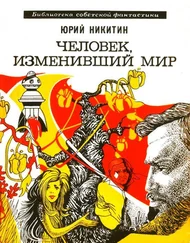

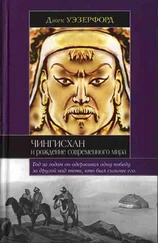
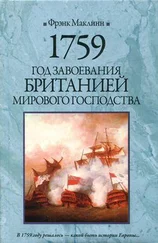

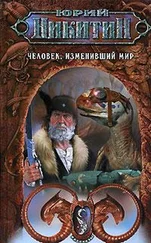
![Ксения Чепикова - Человек, научивший мир читать [История Великой информационной революции]](/books/388624/kseniya-chepikova-chelovek-nauchivshij-mir-chitat-ist-thumb.webp)
